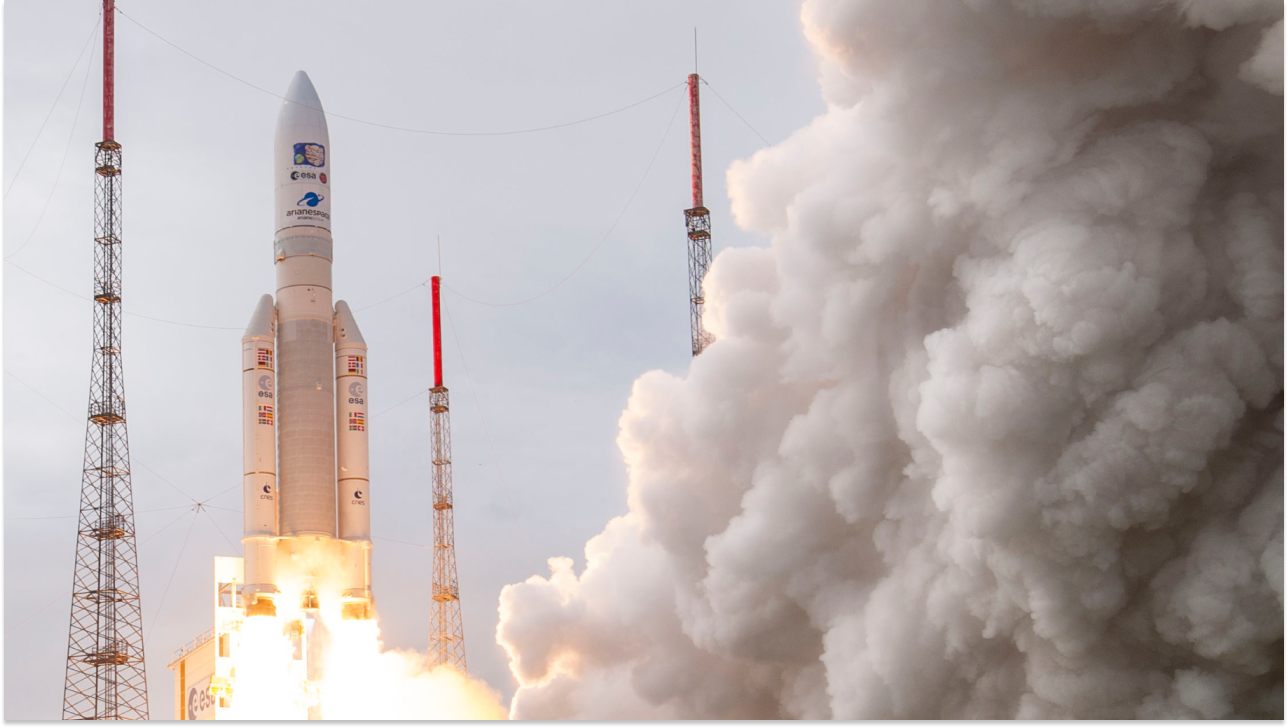Ariane 5: A unique launcher for iconic missions – JUICE
01.09.2023

En route for Jupiter, thanks to Ariane 5
Ariane 5: a career spanning 27 years and 111 successful launches. Ariane 5 lifted off for the last time on July 4. We continue our series highlighting some of the rocket’s most significant missions.
April 14, 2023 marked the start of an epic journey, thanks to Ariane 5.
To Jupiter and beyond
After a perfect launch by Ariane 5, the European Space Agency (ESA) JUpiter ICy moons Explorer (JUICE) probe headed off on its fascinating quest – to study the solar system’s largest planet and investigate whether its “icy moons” could possibly sustain life.
JUICE is Europe’s first mission to explore the planet Jupiter and its moons. The JUICE probe is due to arrive at Jupiter in 2031 after a series of gravity slingshots from Venus and Earth to propel it on its way.
Jupiter’s three large icy moons – Europa, Ganymede, and Callisto – are thought to harbor oceans of liquid water beneath their icy crusts. JUICE will explore these fascinating worlds and investigate whether life ever emerged in these oceans.
Mysteries that Juice will address
La sonde passera au moins trois ans à observer en détail la planète Jupiter et ces trois lunes glacées. JUICE étudiera ces derniers comme de potentiels habitats pour la vie en répondant à deux questions fondamentales : quelles sont les conditions de formation des planètes et d’émergence de la vie ? Comment le système solaire fonctionne-t-il ?
Pourrait-il y avoir – ou y a-t-il jamais eu – de la vie dans le système de Jupiter ?
Au cours de son voyage de plus de 5 milliards de kilomètres, le vaisseau spatial JUICE effectuera une série de survols de Callisto, Ganymède et Europe, recueillant des données pour tenter de comprendre s’il est possible que ces lunes et ses océans présents sous leurs surfaces glacées puissent abriter une vie microbienne. La sonde JUICE transporte 10 instruments scientifiques de pointe, dont des caméras, des spectromètres, un radar pénétrant la glace, un altimètre, une expérience de radioscience, un ensemble de particules et divers capteurs de champs magnétiques et électriques, et effectuera une visite du système de Jupiter.
The best possible start for the journey to Jupiter
The launch took place at exactly 9:14 am, local time at the European spaceport in French Guiana. Following a to-the-second lift-off, the penultimate Ariane 5 rocket carried its precious passenger on a trajectory due east out over the Atlantic Ocean.
To set the probe off on its interplanetary cruise, Ariane 5 had to accelerate JUICE to Earth-escape velocity (11 km/s).After nearly half an hour together, the JUICE spacecraft separated smoothly from Ariane 5 to begin its eight-year voyage to the Jupiter system – and a thrilling new chapter in space exploration.